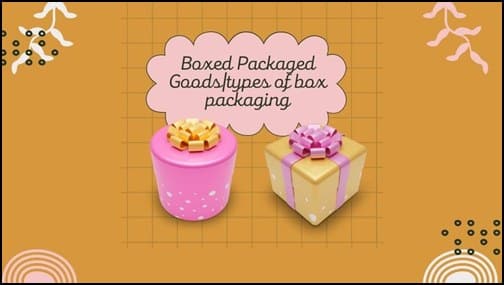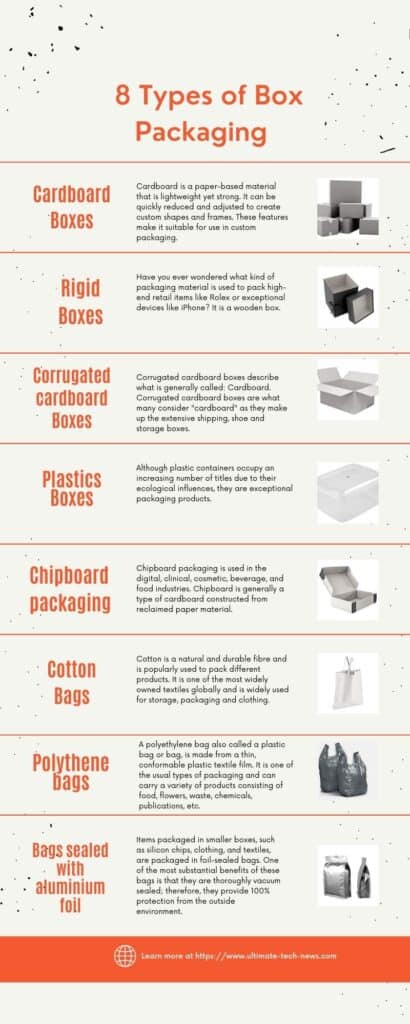
Do you remember the feeling when you grabbed your initial iPhone? Remove the plastic seal and feel the elegant white box? Touching the package for the first time, you already felt this tool’s value, superior quality, and value. This is not a coincidence! Apple diligently strategized how they would package their product to align with their brand of providing world-class product development and consumer experience!
It’s clear that packaging plays a significant role in the seen value of a product. Overall, the packaging market hasn’t changed much in recent years compared to the steady advances made in wearable technology. With all the packaging and box options available in today’s market, selecting the most suitable packaging service for your item is often challenging. Let’s take a look at some of the various types of packaging options you can use to improve your product and customer experience!
How do I pack a product for shipping?
Choose the packaging material for your delivery and place your package directly on the product. Choose properly lined boxes/bags as the primary packaging and, if necessary, take advantage of a thick second packaging as well. Put the thing at a distance of 6 cm from the entire surface of the container wall. Include padding anywhere required
Boxed Package Product Explained: Types of Packaging and Benefits
With products of all kinds being widely purchased and supplied daily, the packaging industry is flourishing like never before. According to a short article published by Company Cord, in 2019, the value of the international packaging market was $926.43 billion, and it is expected to reach $1,652.28 billion by 2027.
The figure represents the growing demand for packaging and boxed products. Various types of items are packed using different packaging materials to ensure the safety of products in the distribution, exchange and storage space. Continue reading the post to learn about the benefits and types of packaging material.
Different types of packaging help to keep the item risk-free during delivery along with storage space. In addition, it also acts as an advertising and sales tool. According to one study, about 72% of US consumers say package design affects their purchasing choice. Sounds interesting, appropriate? Is not that. Below are some of the main benefits of packaging.
Physical Protection
Good packaging offers physical protection to the goods. It protects them from damage caused by a wide range of reasons, including resonance, decay, extreme temperatures, and more. Along with this, the boxed products are kept protected from things like moisture and dust.
Containment
Many items come with multiple small devices. For example, a mobile phone comes with a battery charger and headphones. Tailor-made packaging provides containment for small accessories and products, including tablets or smartphones.
Defending
When the items are in transportation, they may be lost or damaged. Otherwise, they will be adequately packaged. Properly packaged package items include packing slips that make tracking and identifying the object accessible. In addition, excellent packaging provides a line of protection for things.
Easy to handle
If you don’t pack items properly, it can be challenging to care for them in storage facilities, transportation, and distribution. Packaging helps storage and distribution staff by including things like protectors or other components that help make handling products easier. In addition, the dunnage included in the boxed products during packing provides an extra layer of protection to the items, making them easier to handle and transport.
premium touch
Great packaging is just one of the most effective advertising and marketing devices for your business. Several companies supply packaging with top and superior design and finish. It helps to produce a great photo of the items and the brand. Boxed products with premium packaging play an essential role in developing a brand image and attracting new consumers.
8 Types of Box Packaging (Guides)

1. Cardboard boxes
Cardboard is a paper-based material that is lightweight yet strong. It can be quickly reduced and adjusted to create custom shapes and frames. These features make it suitable for use in custom packaging. It is made by transforming coarse products from wood or recycled waste paper into pulp and then bleaching. Cardboard eco-friendly mailer boxes are available in numerous grades, suitable for different packaging requirements.
2. Rigid Boxes
Have you ever wondered what kind of packaging material is used to pack high-end retail items like Rolex or exceptional devices like iPhone? It is a wooden box. The most prominent use of this packaging material is for packing products packed in premium boxes to add an excellent touch to the products.
A rigid box is highly durable and is constructed of intensely condensed paperboard, which is four times thicker than cardboard. Wooden crates have a tight frame and are significantly heavy and dense.
Also, these boxes are highly customizable. You can print them, add a matte lamination, or give them an AQ finish. When it comes to prices, they are among the most expensive boxed packaged goods materials, so they are used for premium items.
3. Corrugated cardboard boxes
Corrugated cardboard boxes describe what is generally called: Cardboard. Corrugated cardboard boxes are what many consider “cardboard” as they make up the extensive shipping, shoe and storage boxes. Many people don’t know that corrugated cardboard boxes also come in different types depending on the strength and strength of the package. However, determining a specific corrugated product is easy. How is the product determined? By your corrugated tool (also known as the flute).
Recognizing a corrugated material is easy. It consists of three layers of paper, an outer liner, an inner liner, and a grooved (also known as fluted) tool. Corrugated tool that provides rigidity and resistance.
The primary raw material used to create corrugated boards is recycled paper made on massive, high-precision equipment called corrugators. These types of panels can be reused and recycled repeatedly as a source of pulp fibre. Corrugated cartons are of different types, single found, double found (single wall), double wall and triple wall surface. They can be used to make gaskets with different qualities, efficiencies and resistances. The cardboard is cut and folded into various shapes and sizes to become corrugated packaging. Other applications for corrugated cardboard packaging include retail packaging, pizza shipping boxes, tiny packages of durable goods, etc.
4. Plastics
Although plastic containers occupy an increasing number of titles due to their ecological influences, they are exceptional packaging products. It has replaced many traditional packaging products such as ceramics, wood, and glass.
One of the most important benefits of plastic containers is that they are robust, resistant and immune to dirt and moisture. Also, you can develop them in different shapes. Plastics are very durable, and some of the plastic boxes are even recyclable if you make them using the correct type of polymer.
You can use plastic to develop watertight and airtight containers, making them useful for packaging food. Also, most plastics are very affordable, making them a good option for loading different types of cargo.
5. Chipboard packaging
Chipboard packaging is used in the digital, clinical, cosmetic, beverage, and food industries. Chipboard is generally a type of cardboard constructed from reclaimed paper material. It can be conveniently cut, folded and created. It is a cost-effective packaging option for your products.
It comes in numerous densities, and hardness is identified by how high the thickness of the material is. If you want the images to be printed directly onto the chipboard, you can treat the chipboard with lye sulphate and CCNB (Clay Coated News Back), making the material much more durable.
You cannot use chipboard packaging if your transaction with heavy items since chipboard sheet is a lightweight product made for numerous grocery items like cereal, crackers, cell boxes, etc. Likewise, if the storage atmosphere is heavy with moisture, the chipboard can quickly weaken, causing discolouration and swelling.
6. Cotton bags
Cotton is a natural and durable fibre and is popularly used to pack different products. It is one of the most widely owned textiles globally and is widely used for storage, packaging and clothing.
Brands that are eco-conscious and focus on environmentally friendly items use cotton bags as consumer packaging. Also, cotton is very customizable; you can print or dye it to make attractive packaging.
7. Polythene bags
A polyethylene bag also called a plastic bag or bag, is made from a thin, conformable plastic textile film. It is one of the usual types of packaging and can carry a variety of products consisting of food, flowers, waste, chemicals, publications, etc.
Polybags are durable yet lightweight, recyclable, and flexible. Since poly bags are structurally easy to manufacture, they can be fully customized in design, style and size while cost-effective. Plastic recycling is also feasible with polyethylene bags, depending on the construction. Most poly bags are made with security features, tape add-ons, hanger openings, and carry handles to ensure that products are well protected and visually appealing.
8. Bags sealed with aluminium foil
Items packaged in smaller boxes, such as silicon chips, clothing, and textiles, are packaged in foil-sealed bags. One of the most substantial benefits of these bags is that they are thoroughly vacuum sealed; therefore, they provide 100% protection from the outside environment.
Obstacle-covered bags are delicate, so they carry items that are usually kept on store shelves. These bags are a better choice for item storage space in less space.
Last words
The first impression is the last, and boxed products play a crucial role in developing your first impression on your consumers. Never mind product packaging if you want to take your company to the next level.
Leave a Reply
You must be logged in to post a comment.